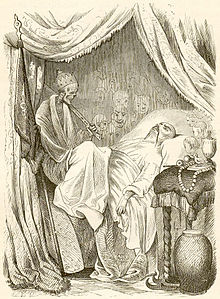
Hans Christian Andersen was a Danish author. Although a prolific writer of plays, travelogues, novels, and poems, he is best remembered for his literary fairy tales.
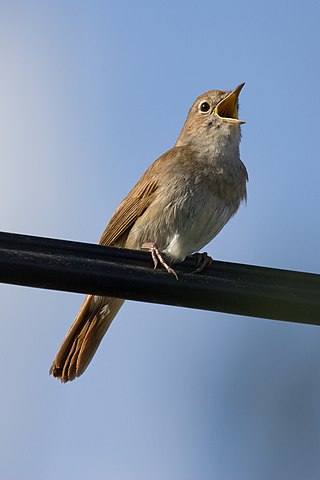
The common nightingale, rufous nightingale or simply nightingale, is a small passerine bird best known for its powerful and beautiful song. It was formerly classed as a member of the thrush family Turdidae, but is now more generally considered to be an Old World flycatcher, Muscicapidae. It belongs to a group of more terrestrial species, often called chats.
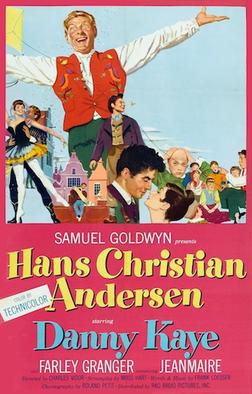
Hans Christian Andersen is a 1952 Hollywood musical film directed by Charles Vidor and produced by Samuel Goldwyn. The screenplay by Moss Hart and an uncredited Ben Hecht is based on a story by Myles Connolly.
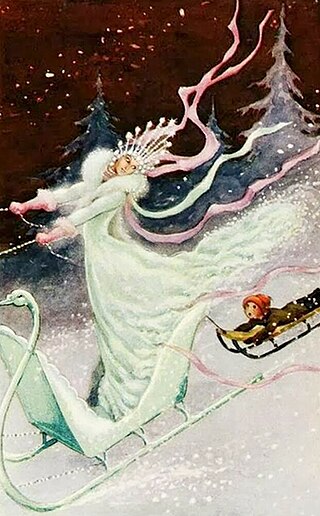
"The Snow Queen" is a 1844 original fairy tale by Danish author Hans Christian Andersen. It was first published 21 December 1844 in New Fairy Tales. First Volume. Second Collection. The story centers on the struggle between good and evil as experienced by Gerda and her friend, Kai. Unlike Andersen's other stories, The Snow Queen is written in a novel-styled narrative, being divided into seven chapters.
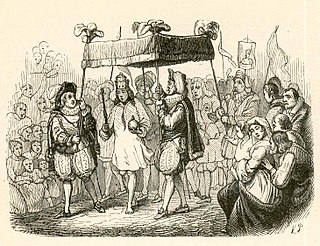
"The Emperor's New Clothes" is a literary folktale written by Danish author Hans Christian Andersen, about a vain emperor who gets exposed before his subjects. The tale has been translated into over 100 languages.

The Ugly Duckling is a Danish literary fairy tale by Danish poet and author Hans Christian Andersen (1805–1875). It was first published on 11 November 1843 in New Fairy Tales. First Volume. First Collection, with three other tales by Andersen in Copenhagen to great critical acclaim. The tale has been adapted to various media including opera, musical, and animated film. The tale is an original story by Andersen.

"The Shadow" is a literary fairy tale by Danish poet and author Hans Christian Andersen. The tale was first published in 1847.

"The Swineherd" is a literary fairy tale by Hans Christian Andersen about a prince who disguises himself as a swineherd to win an arrogant princess. The tale was first published December 20, 1841 by C. A. Reitzel in Copenhagen, Denmark in Fairy Tales Told for Children. New Collection. Third Booklet. The tale appears to be original with Andersen though similar tales are known. "The Swineherd" has been adapted to other media.

"The Red Shoes" is a literary fairy tale by Danish poet and author Hans Christian Andersen first published by C.A. Reitzel in Copenhagen 7 April 1845 in New Fairy Tales. First Volume. Third Collection. Other tales in the volume include "The Elf Mound" (Elverhøi), "The Jumpers" (Springfyrene), "The Shepherdess and the Chimney Sweep", and "Holger Danske".

Nightingale: A New Musical is a musical in one act, with book, music and lyrics by Charles Strouse. It is based on Hans Christian Andersen's 1843 fairy tale, "The Nightingale", and tells the story of a Chinese emperor who learns, nearly too late, that wealth cannot buy happiness.

The Nightingale is a short opera in three acts by Igor Stravinsky to a Russian-language libretto by him and Stepan Mitusov, based on a tale by Hans Christian Andersen: a nasty Chinese Emperor is reduced to tears and made kind by a small grey bird. It was completed on 28 March 1914 and premiered a few weeks later, on 26 May, by the Ballets Russes conducted by Pierre Monteux at the Palais Garnier in Paris. Publication, by the then Paris-based Éditions Russes de Musique, followed only in 1923 and caused the opera to become known by its French title of Le Rossignol and French descriptor of conte lyrique, or lyric tale, despite its being wholly Russian.

This is a list of published works by Hans Christian Andersen. The list has been supplemented with a few important posthumous editions of his works; the year given in each entry refers to the first Danish edition. They are all in the public domain because Andersen died over 100 years ago.
Chant du Rossignol, as it was published in 1921, is a poème symphonique by Igor Stravinsky adapted in 1917 from his 1914 opera The Nightingale.
"The Most Incredible Thing" is the final literary fairy tale by Danish poet and author Hans Christian Andersen (1805–1875). The story is about a contest to find the most incredible thing and the wondrous consequences when the winner is chosen. The tale was first published in an English translation by Horace Scudder, an American correspondent of Andersen's, in the United States in September 1870 before being published in the original Danish in Denmark in October 1870. "The Most Incredible Thing" was the first of Andersen's tales to be published in Denmark during World War II. Andersen considered the tale one of his best.
The Fairytaler is a 2002 Danish animated television series based on the fairy tales of Hans Christian Andersen. It was also the second anthology series adapted from Hans Christian Andersen's works right after Andersen Stories ended.

New Fairy Tales. First Volume is a collection of nine fairy tales by Hans Christian Andersen. The tales were published in a series of three installments by C. A. Reitzel in Copenhagen, Denmark between November 1843 and April 1845.

Fairy Tales Told for Children. New Collection is a collection of ten fairy tales by Hans Christian Andersen. The tales were published in a series of three installments by C. A. Reitzel in Copenhagen, Denmark between October 1838 and December 1841.
Events from the year 1837 in Denmark.
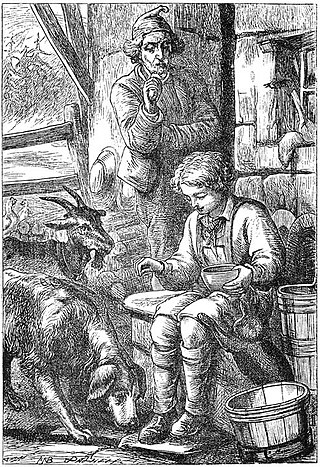
"The Ice-Maiden" is an 1861 literary fairy tale by the Danish writer Hans Christian Andersen. The first English translation was published by King and Baird in 1863. The story, set in Switzerland, was inspired by a local legend about the Île de Peilz, a small island in Lake Geneva, which is also the setting of its denouement.
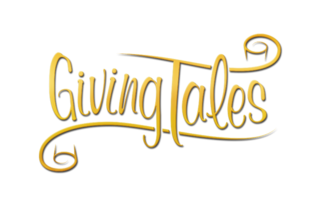
GivingTales is a mobile application offering illustrated versions of Hans Christian Andersen's classic fairy tales. The app has been developed in association with Sir Roger Moore in 2015.
